Project details
Skill
Cost
Estimated Time
We may be compensated if you purchase through links on our website. Our team is committed to delivering honest, objective, and independent reviews on home products and services.
A set of low wooden stilts is a great way to teach your kids about balance and coordination without sending them out on the high wire. Building them is quite easy, as This Old House general contractor Tom Silva and a few young carpenters demonstrate. All it takes is a few pieces of lumber and some sturdy bolts. In an hour or two, you can put on your own circus show.
Because stilt walking takes some skill to master, we recommend this project for children 8 and up.
Project Overview
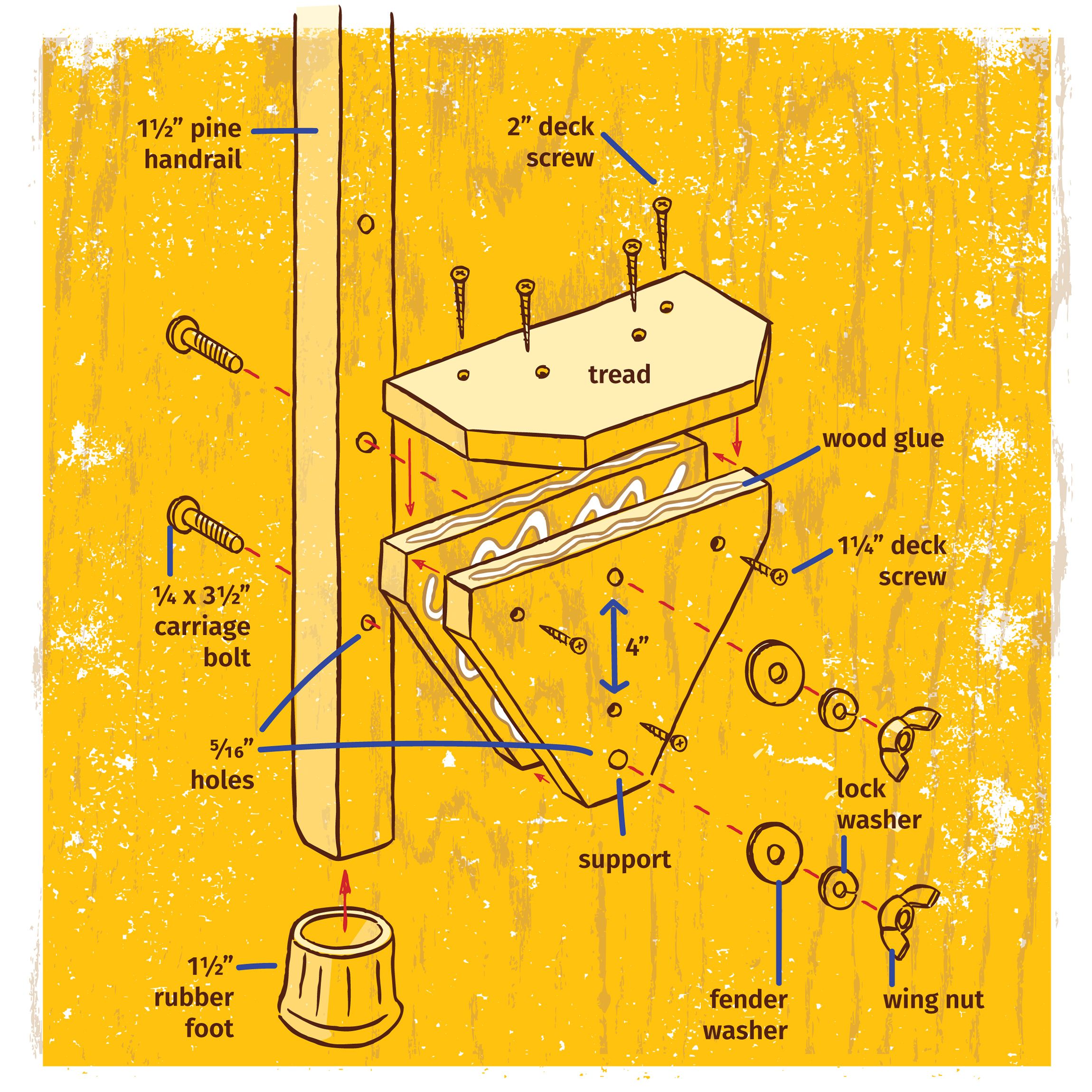
Silva makes his stilts from pine handrails, which are flat on one side and rounded on the other. The flat side braces against the walker, while the round side makes for a comfortable grip.
Large supports connect the treads to the flat sides of the poles. Silva uses poplar to keep them strong, though you can use any type of hardwood. Carriage bolts attach the supports to the poles, and you can unscrew them and move them around to adjust the height of the treads. Finally, rubber feet go onto the bottom of the poles to keep them from slipping.
Shopping List
Here’s what you’ll need to build the stilts shown in the video:
- 12 feet of 1 1/2-inch diameter pine handrail (round on one side, flat on the other)
- 3 feet of 1-by-8 poplar
- Wood glue
- 3d nails
- 2-inch deck screws
- 1 1/4-inch deck screws
- Four 1/4-by-3 1/2-inch carriage bolts with fender washers, lock washers, and wingnuts
- 120-grit sandpaper
- One pair of 1 1/2-inch rubber feet (the kind sometimes used for furniture or canes)
Tools You’ll Need
You’ll also need these tools for the project:
- Circular saw or jigsaw
- Drill/driver with various bits
- Hammer
- Random-orbit sander
- Tape measure
- Straightedge
- Pencil
Preparing the Components
First, you’ll need to prep and cut each of the stilt parts.
Laying Out the Pieces
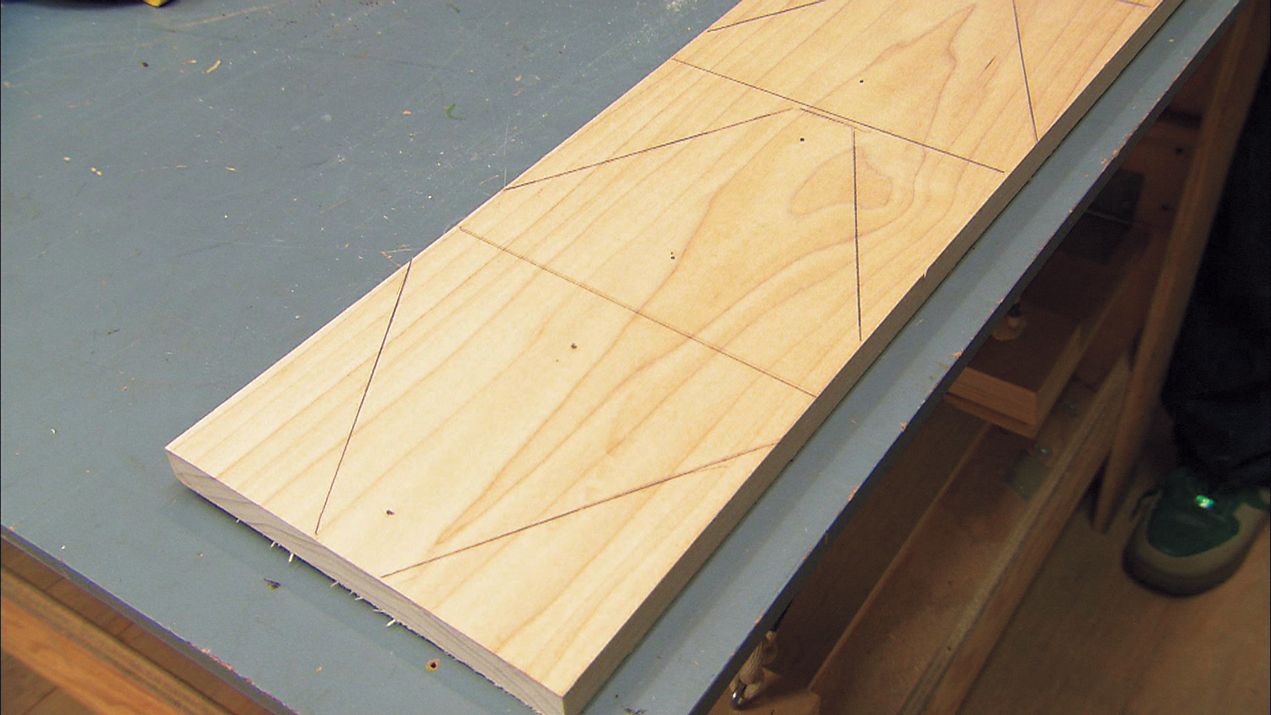
We’ve included a helpful template for the supports and treads. Use the outlines and trace the shapes on the poplar 1-by-8. You’ll need four support pieces and two treads, so leave plenty of room and think of ways to overlap the lines.
Along the middle of two of the support pieces, make a mark 1 inch from the top edge and another exactly 4 inches from the first one. You’ll drill holes here for the bolts attaching the supports to the poles, so measure carefully.
Cutting the Wood
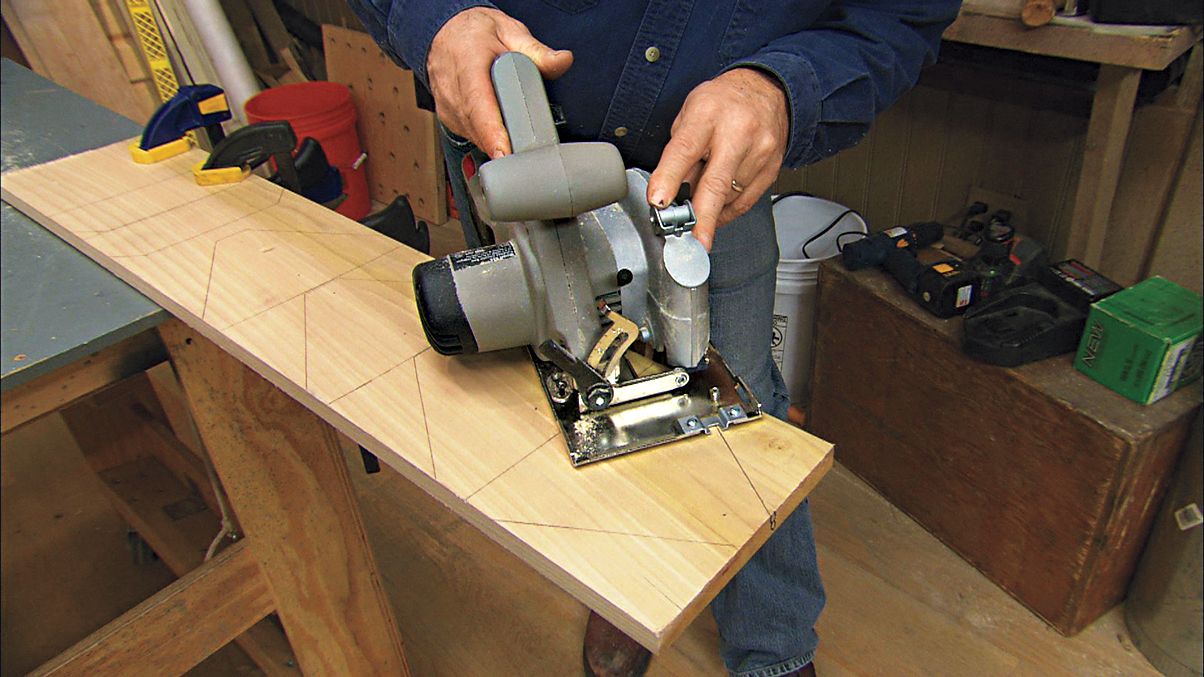
Next, a grown-up should cut the treads and support pieces along the lines with a circular saw or jigsaw.
Gluing the Supports Together
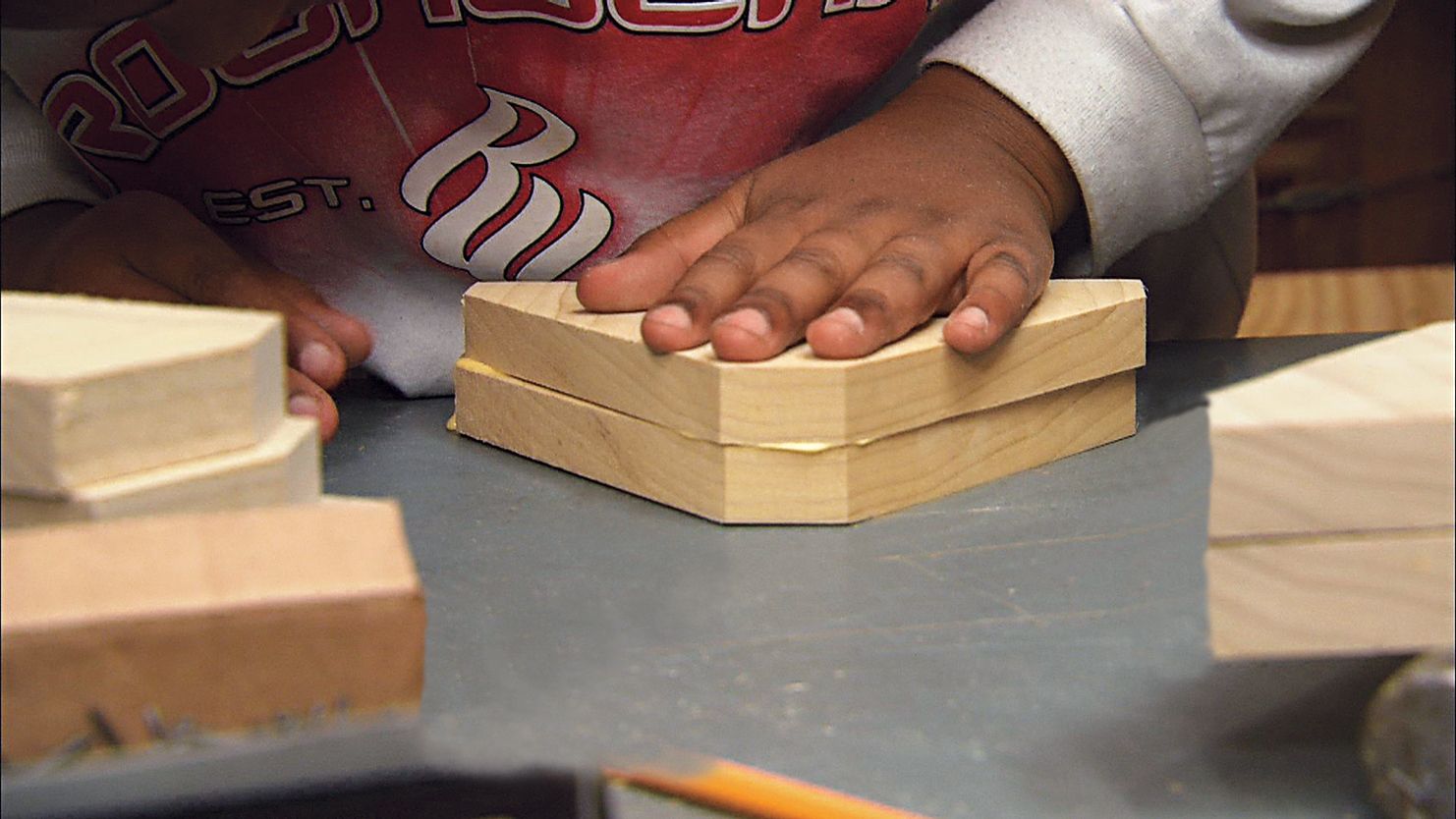
Once you’ve cut out all the supports, cover the face of one support piece with wood glue and place a second piece on top of it. Make sure the edges line up. Then, tack the pieces together by hammering 3d nails close to their center. Wipe up any glue that oozes out with a damp rag.
Repeat these steps for the other pair of support pieces.
Screwing the Supports Together

Using a drill/driver with a countersink bit, make three pilot holes through the supports that are 1–2 inches from each corner. Drive 1 1/4-inch deck screws into the holes to further secure the supports, as Silva does in the image above.
Attaching the Treads
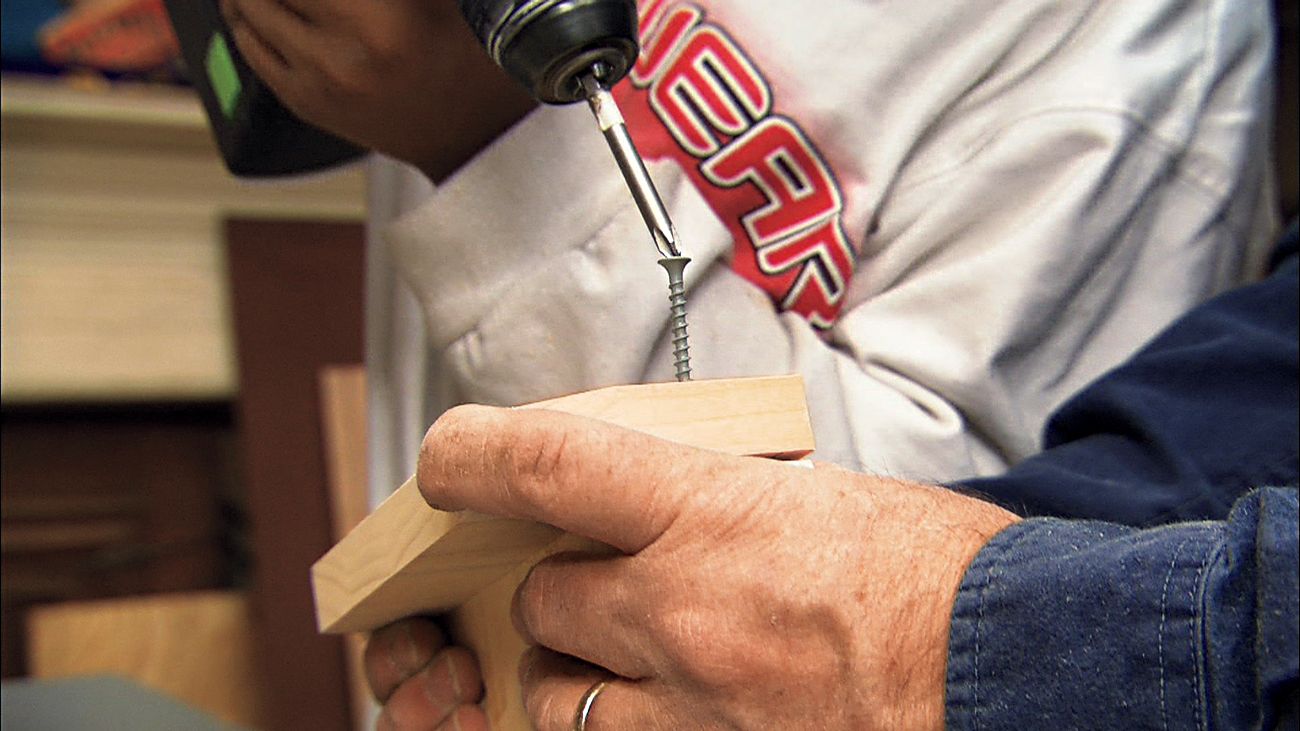
Now, it’s time to attach the treads to the supports. Using your drill/driver and countersink bit, make four pilot holes through each tread for the screws attaching it to the support. Two holes should go through the top edge of each support piece.
Run a bead of glue along the support’s long edge, and lay the tread on top of it. Make sure to align the long edge of the tread with the long edge of the support. Then, screw the tread to the support with 2-inch deck screws.
Repeat these steps for the other tread.
Preparing the Poles
Now, it’s time to build your stilts’ main structure.
Drilling for the Bolts
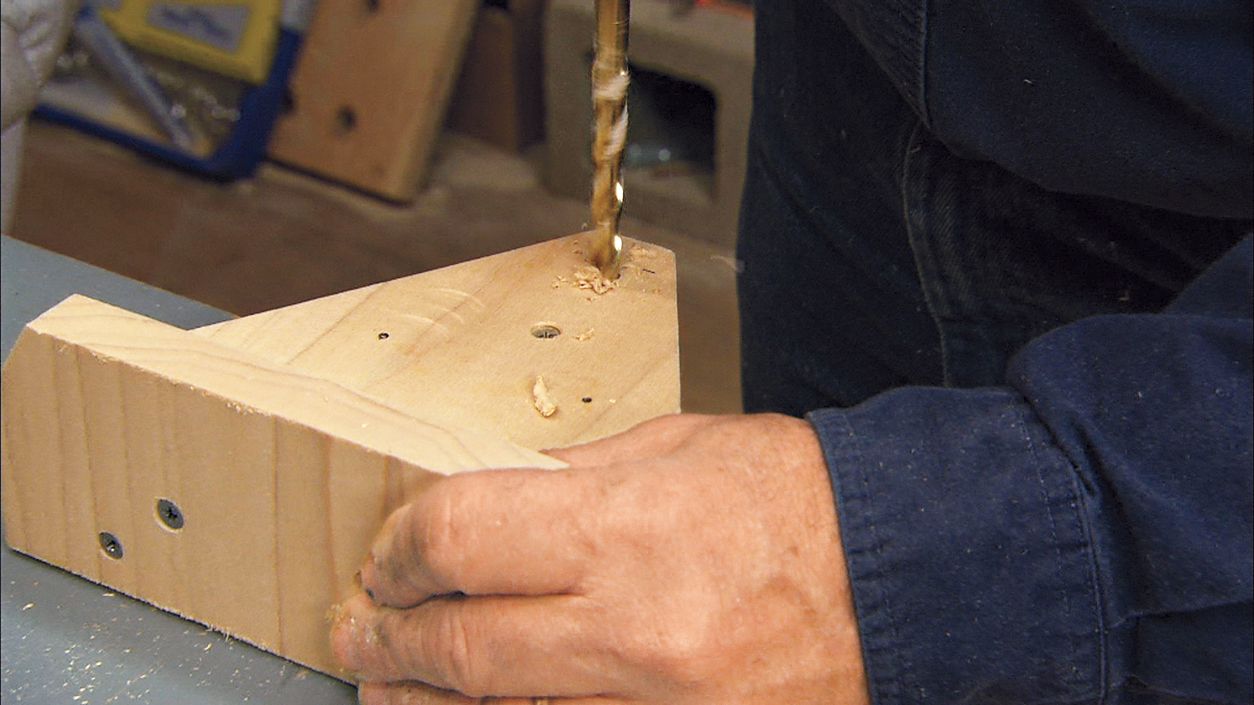
Use a 5/16-inch bit to drill holes at the two marks along the middle of each support piece. These holes will hold the carriage bolts attaching the supports to the poles.
Drilling Holes in the Poles
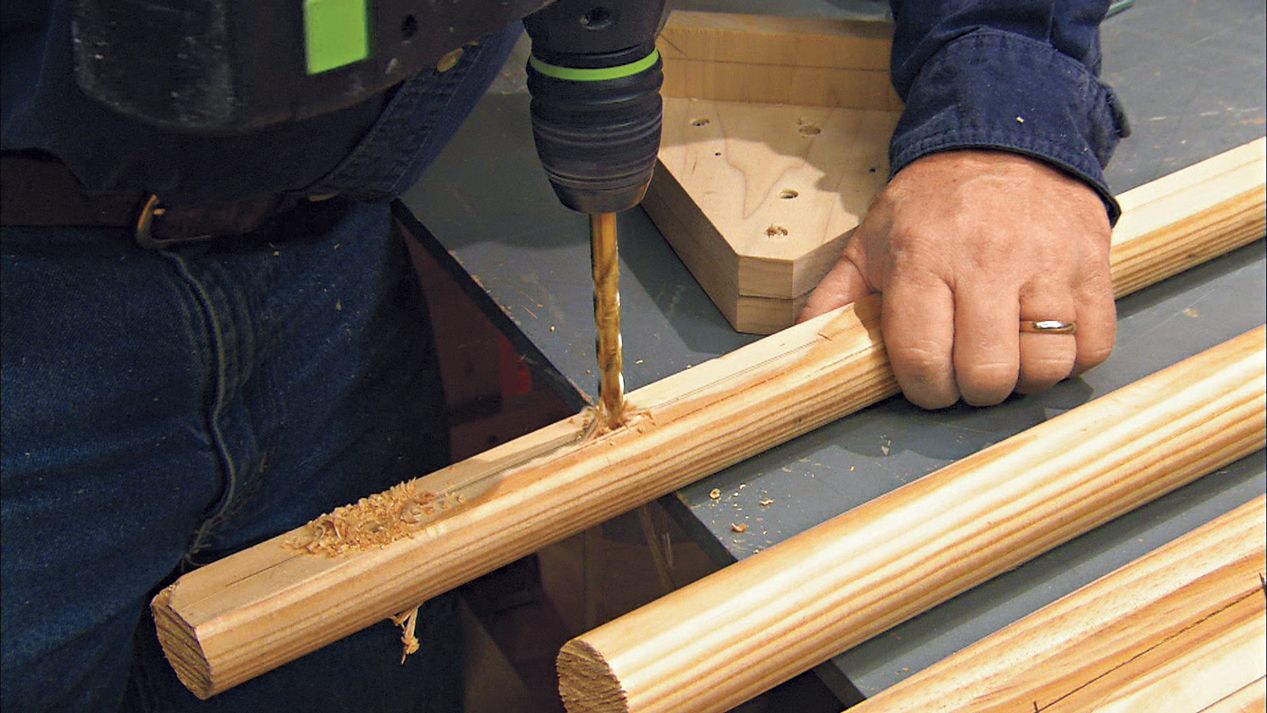
Lay each pole on the work surface, flat side up. Draw a line down the middle of each pole, then mark the line in four places along the lower third of the pole. Start the marks a few inches from the bottom, and space them exactly 4 inches apart in alignment with the holes in the supports.
Hang the end of the pole over the edge of your work surface. Using a drill/driver, make a 5/16-inch hole at each mark, as shown above.
Sanding and Finishing the Parts

It’s never fun to get a splinter as you walk with your stilts. Silva prevents this by sanding all the parts smooth:
- Using a random-orbit sander and 120-grit discs, sand the treads and supports to take out sharp edges and corners.
- The poles should be pretty smooth, but hand-sand them with 120-grit sandpaper just to be sure.
Don’t rush this step—slow and steady gives a smoother result.
Final Assembly
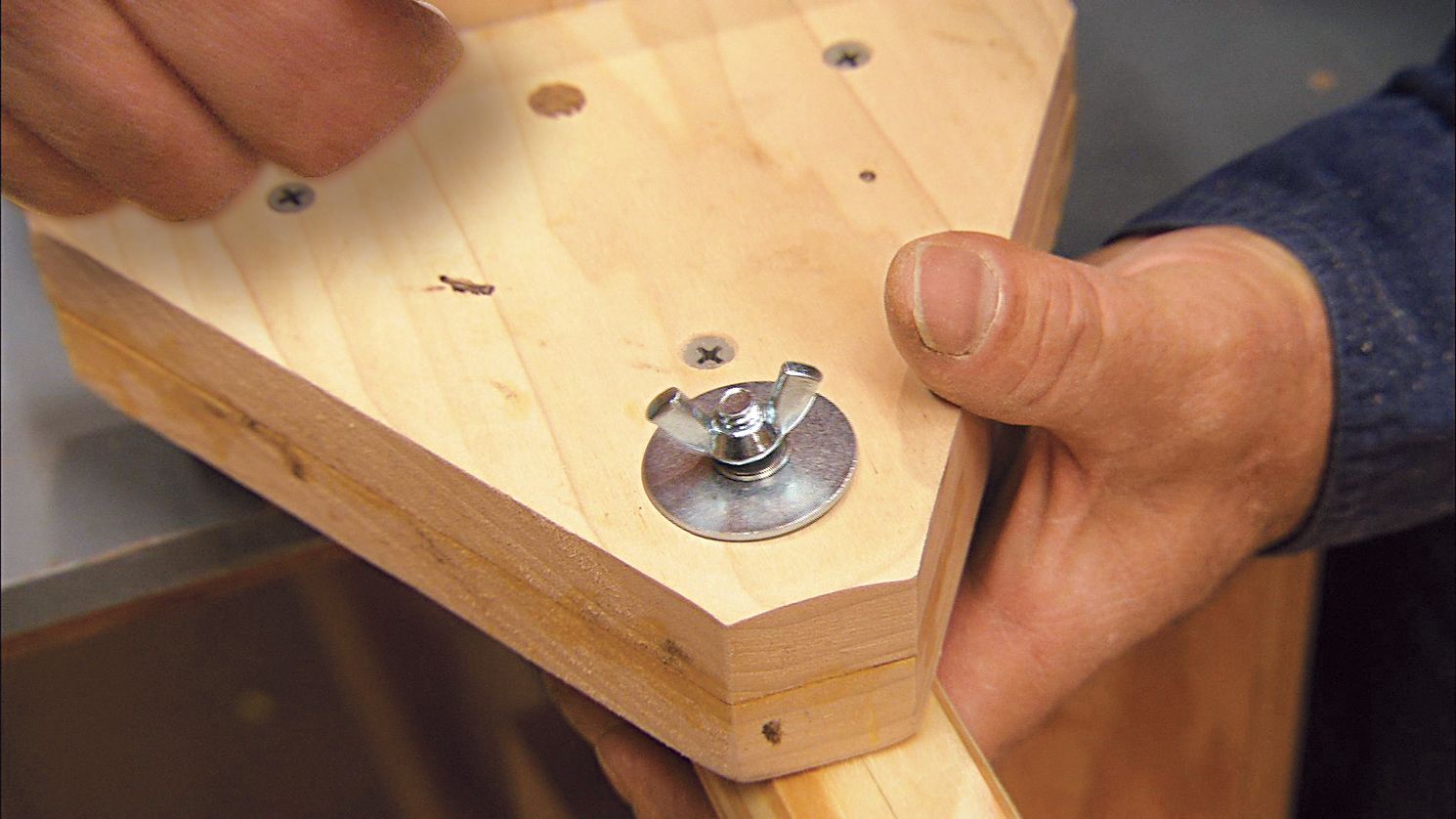
Now, it’s time to put the stilts together:
- Brace the flat side of the tread assembly against the flat side of the pole, lining up the holes in the support with the two lowest holes in the pole.
- Thread a carriage bolt through the pole and the support at each hole.
- Slide a fender washer, then a lock washer, and then a wing nut over the end of each bolt. Tighten it with your fingers.
- Finally, fit a rubber foot over the bottom of each pole.
Adjustability
One of the greatest features of these stilts is their adjustability. By taking off the carriage bolt assembly, you can detach the supports to move the treads to different heights where you’ve drilled each hole. This way, the stilts can grow with your child or adapt well to multiple different walkers.
Mastering the Stilts
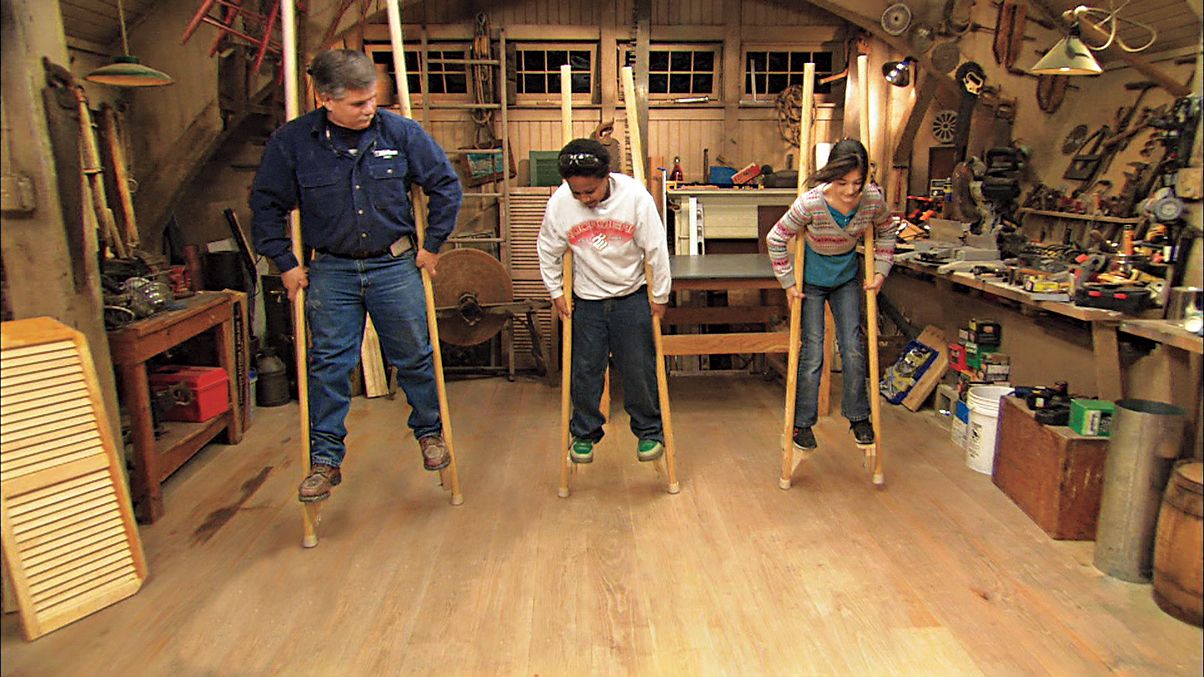
The first time you use the stilts, have a spotter on hand and pick a flat, open area. When you’re ready, put the poles behind your shoulders and step onto the treads.
Take small, deliberate steps to keep your balance. It might be tempting to look down at your feet, but it’s actually easier to focus your eyes on the path ahead as you go.
Start with the treads at a lower height. This is for safety and to build your confidence. You may lose your balance the first few times, but this way, it’ll be easier to break a fall. With a little practice, you can adjust the treads one step higher, and eventually, you’ll be walking tall.
Enhancing the Stilts
If you’re looking to make your stilts even more fun and unique, the easiest way is to give them a fresh coat of paint with your favorite colors and designs. You can also make your stilts more comfortable by adding padded grips to the handrails.
